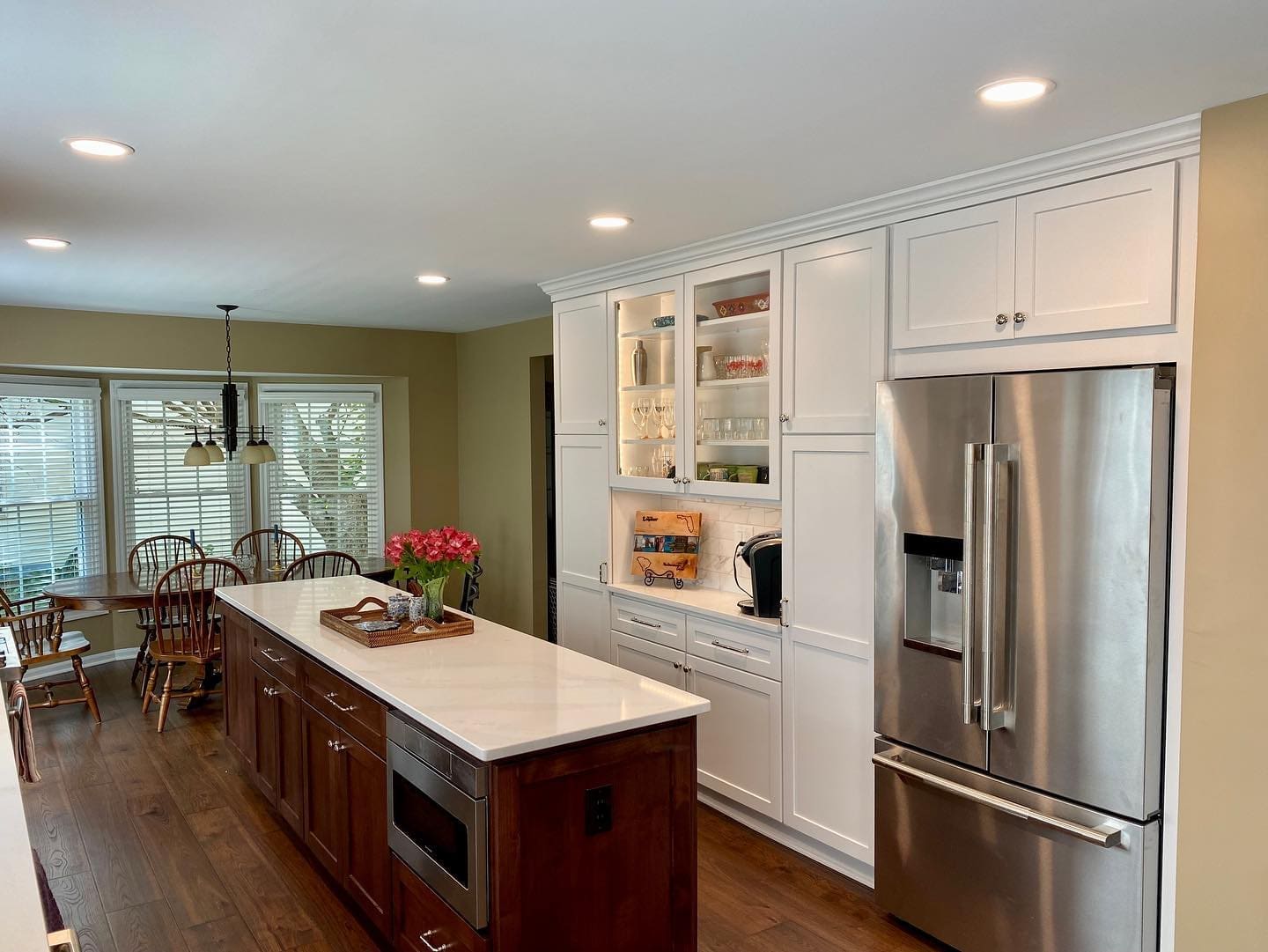A good meal warms the heart, but the odors left behind from cooking are not always so desirable. Not to mention the havoc that grease and steam can wreak on your worktops, backsplash, walls and cabinetry in your Washington DC kitchen. Range hood ventilation is the only sure way to address these problems, as opening a window simply does not allow air to circulate sufficiently to take care of unwanted smells and moisture. However, the type of ventilation that you use also depends on both the shape of your kitchen and the building you live in. It is important that you first choose the correct type of ducting for your hood. We always recommend that you duct your hood to the exterior of the building, but you can also have a hood that recirculates air through a filter, back into your kitchen.
Venting to the Outside
As already mentioned, this is by far the best way to ventilate your kitchen. Ideally you will want the ducting to have the shortest possible path to the exterior of the building, in that respect, mounting directly to an exterior wall is preferable, but not a must. Longer pathways are achievable; however, they will require the implementation of a range hood that has the power to vent exhaust for longer distances.
Internal Filtering System
An internal filtering system is achieved by passing air through a charcoal filter. Once the air is cleaned it is ventilated back into the kitchen, removing the need for an exterior duct. To make sure that this type of range hood operates to its maximum efficiency, filters should be changed every two to three months, depending on how busy your kitchen is. Some range hoods, commonly referred to as convertibles, are compatible with both ducted and filtered set-ups.
Range hoods also come in a number of styles, and again, the type you choose is often dictated by your kitchen design or shape. We have included a list of the most common types below; however, new designs are always coming onto the market, so don’t feel limited to this list.
Microwave Hood Combination
The combination microwave/range hood has become a popular space saver in many kitchens, conveniently locating your microwave over your range.
Cabinet Range Hoods
This is the type of hood most often seen in galley style kitchens, or those with cabinets above the worktops. They blend in seamlessly with the surrounding décor, and are hidden beneath a cabinet.
Chimney Range Hoods
The chimney range hood, unlike the cabinet hood, is out in the open. The flue runs the length of the wall above the range; however, they present the opportunity to add a certain charm to your kitchen. This is normally achieved by adding an enclosure, which gives it that country kitchen feel.
Island Range Hoods
The island range hood is usually quite large, and is used for kitchens with a central island and range. An overhanging canopy catches steam and odors as they rise, allowing for maximum ventilation.
Downdraft Range Hoods
If you prefer not to have any sort of hood in obvious view, then the downdraft range hood is the option for you. It works by hiding the hood behind the range, so that the moisture and smoke are drawn directly into the vents while you cook. When the range is not in use, the hood retracts back into a hidden compartment.
Cleaning and Maintain your Range Hood
Whether your range hood is ducted or uses recirculation, you will need to periodically clean or replace the filters, and ensure the hood is properly maintained. Aluminum filters are used in ducted range hoods, most of which are dishwasher friendly. The filters in recirculation range hoods, however, are not washable and must be replaced instead.
Range hoods use CFM to measure the amount of powered needed to move air through the system, which stands for cubic feet per minute. For range hoods with longer ducting to an exterior wall, or for those of you who simply want greater efficiency, higher CFM is desirable. We recommend a CFM of around 350 or more.
Considerations when Choosing a Range Hood
Features, such as built in lighting and variable power settings are usually standard in range hoods, but other add-ons are also available. Automatic shut-off is one such feature, which you can set to activate after a specified period of time has passed. Whether you are purchasing a range hood for your own home, apartment, shared accommodation or a place of work, you will need to determine how much noise you, or your neighbors, are prepared to put up with. The noise generated by range hoods is measured in sones; with one sone roughly equating to a quiet hum, whereas 5 sones is more like a noticeable hum.
With the variety of designs available for range hoods and custom designs, also an option, it is easy to make your range hood a beautiful focal point of your kitchen.






